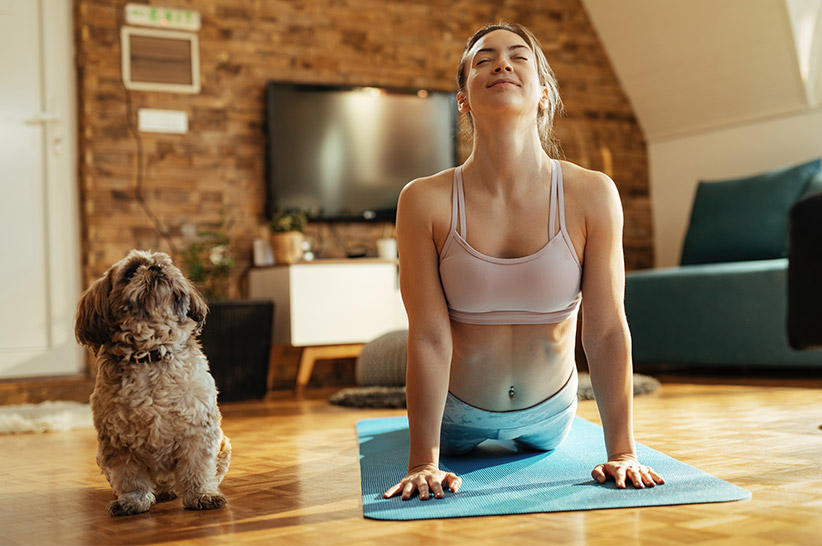One of the best things about following a keto diet is that you learn to support it with exercise. Try to connect with successful ketoers and they’ll tell you that exercise has worked wonders for their body. In today’s topic, we’re going to explore fifteen fun pilates moves.
Pilates is an excellent exercise that works out your core. It improves your flexibility, strengthens and tone your muscles, and more. Keep reading this guide to learn everything you should about Pilates.
What Is Pilates?
Pilates consists of repetitive, controlled exercises that focus on core strengthening and stabilization. However, it’s not just your core that develops. Pilates also improves your back, arm, and leg muscles.
Pilates makes fitness convenient for everyone since it can be done with or without equipment. You may use a mat or Pilates’ specialized equipment called a Reformer which resembles a hospital bed. You’ll know why in a while.
So what’s the story behind Pilates? Pilates was born out of a sickly man’s determination to strengthen his body. His name was Joseph Pilates. While working as an orderly in a hospital during the latter part of World War 1, he created a system that helped non-ambulatory patients get exercise.
The doctors noticed that the patients who received Pilates’ therapy recovered fast. Since then, his exercise has been used over the years 1.
5 Benefits of Pilates
There are so many reasons why you should do Pilates on a daily basis. If you’re not sure what you can get out of this workout, here are five amazing benefits.
1. Relieves lower back pain
Lower back pain results from heavy lifting, a poor posture, a strenuous workout, or a chronic condition. Did you know that strengthening your core in Pilates relieves lower back pain?
Having strong abdominal muscles supports your spine and pelvis. A recent study showed that core strength training is effective in alleviating chronic lower back pain or pain which lasts over 12 weeks 2.
2. Promotes good posture
Good posture makes you look good and feel good about yourself. Even social psychologist Amy Cuddy believes in the power of posture to impact your self-confidence.
Pilates fixes poor posture by improving body awareness. In fact, a 10-week Pilates training program could reduce postural kyphosis in older adults 3.
3. Boosts energy levels
Do you feel tired most of the time even if you get a good night’s sleep? Studies reveal that 20% of adults worldwide experience constant fatigue and low energy. Physical activity is the solution 4.
Like most exercises, Pilates challenges your muscles, especially muscles that have gone tight as a result of sitting for long periods of time. As you inhale and exhale during a Pilates workout, blood circulates throughout your body. Your energy improves.
4. Helps with weight loss
A Pilates workout improves abdominal endurance, upper body muscular endurance, and flexibility as revealed by a study 5. But does it help you lose weight?
If we do some research, there is little evidence suggesting that Pilates alone is an effective weight loss solution. How many calories you burn depends on the difficulty of the Pilates workout. Also, keep in mind that you cannot out-exercise an unhealthy diet.
Along with Pilates exercise, be sure to choose whole foods. Doing so reduces your calorie consumption and likelihood to feel hungry frequently 6.
5. Improves sleep quality
Pilates does more than just strengthening your body. It also soothes your nerves and calms your mind. As we all know, a calm, stress-free mind helps you sleep better.
A recent study on the effects of Pilates on mental health showed that Pilates reduced depressive and anxiety symptoms 7. Another study that investigated the sleep quality of sedentary people showed that after 12 weeks of participating in a Pilates program, sleep quality improved 8.

Is Pilates Good for Core Strengthening?
Yes. Many Pilates moves strengthen the core while targeting all other areas of the body. The best part is that these core strengthening exercises appeal to all levels. So whether this is your first time to try Pilates or have been doing it already, there’s always a new challenge to try — thanks to the wide variety of movements.
15 Killer Pilates Moves to Tighten Up Your Core
Are you ready to add Pilates into your daily fitness routine? Here’s a list of beginner, intermediate, and advanced Pilates moves that engage your core.
Pilates for beginners
1. Pelvic curl
Start every workout session by warming up with the pelvic curl. It doesn’t only target your lower abs, but also your lower back and buttocks.

| Duration | 5 minutes |
| Frequency | Every other day or three times a week. |
| How to do it |
|
| Tips |
|
2. The hundred
Here’s another basic mat exercise that gets your blood flowing. Aside from strengthening your ab muscles, it increases your endurance so that you don’t become easily tired.
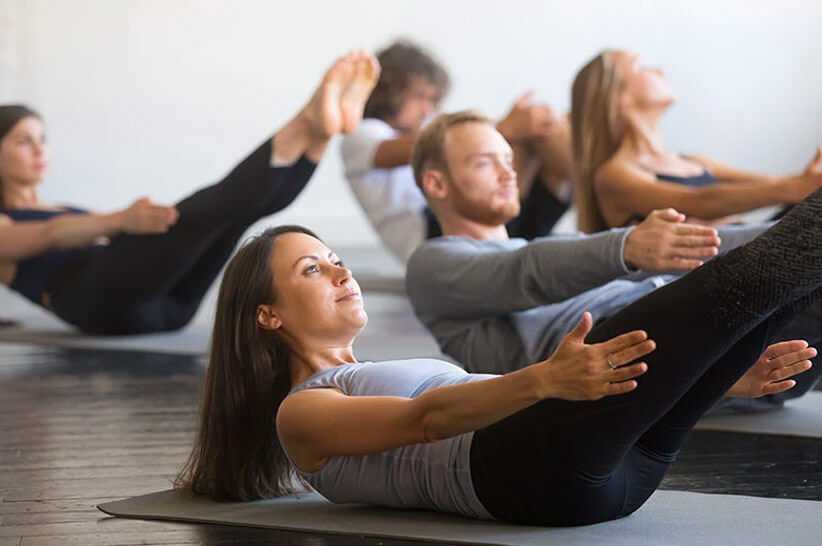
| Duration | 5 minutes |
| Frequency | Every other day or three times a week. |
| How to do it |
|
| Tips |
|
3. Single leg stretch
Targeting your lower abs and stabilizing your spine, this move can be used as part of your Pilates warm-up.
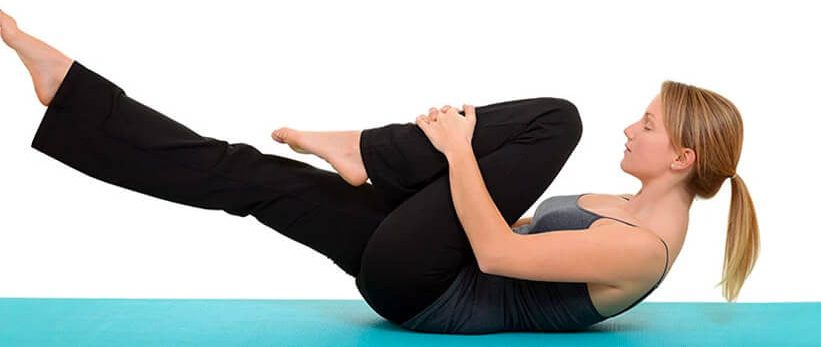
| Duration | 1 minute or 10-15 repetitions for each leg |
| Frequency | Every other day or three times a week. |
| How to do it |
|
| Tips |
|
4. Double leg stretch
A more challenging exercise than the single leg stretch, the double leg stretch demands a lot of ab work. If you do it consistently, your body coordination will improve.

| Duration | 1 minute or 10-15 repetitions |
| Frequency | Every other day or three times a week. |
| How to do it |
|
| Tips |
|
5. Single leg circle
This super easy Pilates move will tone up your thighs. At the same time, it stabilizes your shoulders and pelvis.
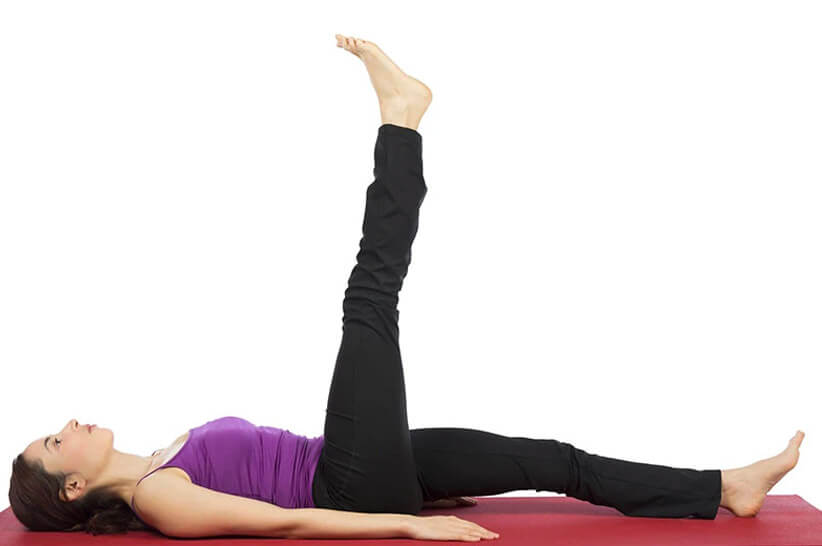
| Duration | 3 minutes |
| Frequency | Every other day or three times a week. |
| How to do it |
|
| Tips |
|
Intermediate pilates moves
1. The teaser
This move entails rolling your vertebra one at a time. It enhances your balance and improves your spinal strength.
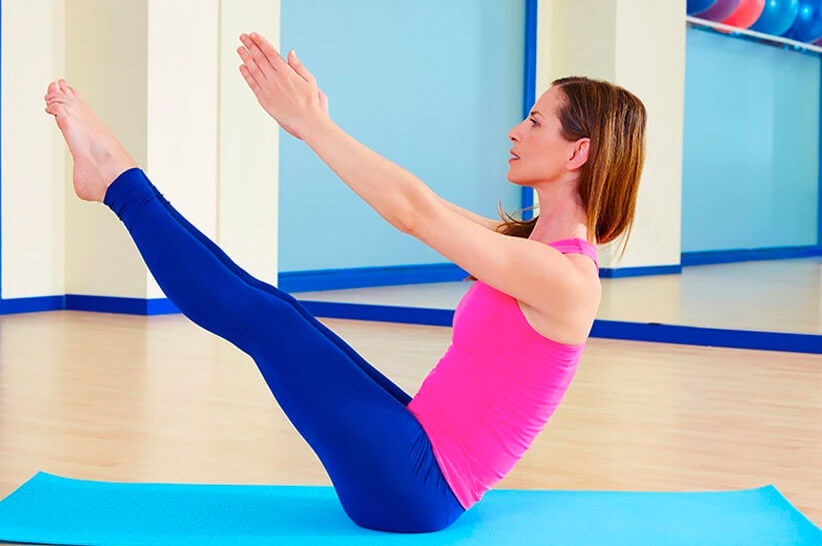
| Duration | 5 minutes |
| Frequency | Every other day or three times a week. |
| How to do it |
|
| Tips |
|
2. Reverse plank triceps dip
The reverse plank triceps dip targets your core, arms, and hip and spine muscles. If you live an active lifestyle, this exercise helps you move better.
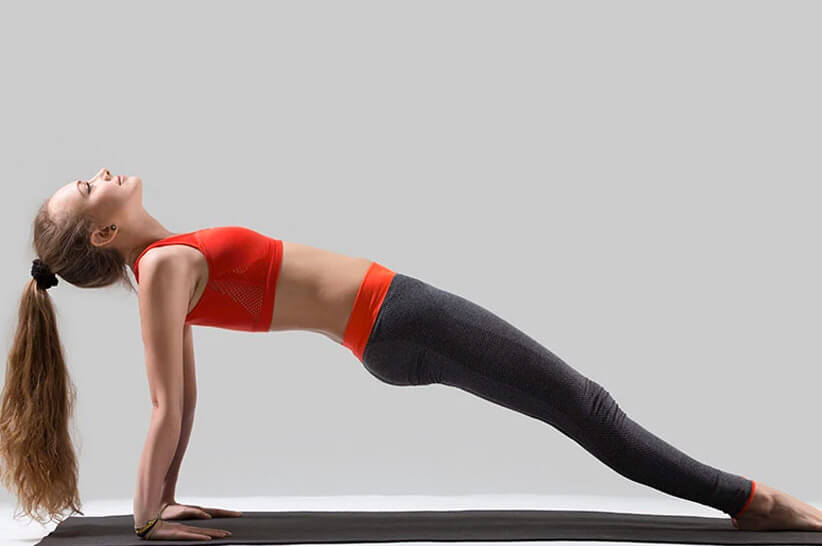
| Duration | 5 minutes |
| Frequency | Every other day or three times a week. |
| How to do it |
|
| Tips |
|
3. Swimming
The swimming exercise engages your back muscles as you lie on your core. As a result, you’re less likely to sustain back injury and experience back pain.

| Duration | 5 minutes or 50 repetitions |
| Frequency | Every other day or three times a week. |
| How to do it |
|
| Tips |
|
4. Pilates push up
If you’ve done push-ups in the past, you already know that this exercise works mainly your triceps. It also recruits your chest, shoulders, and core.
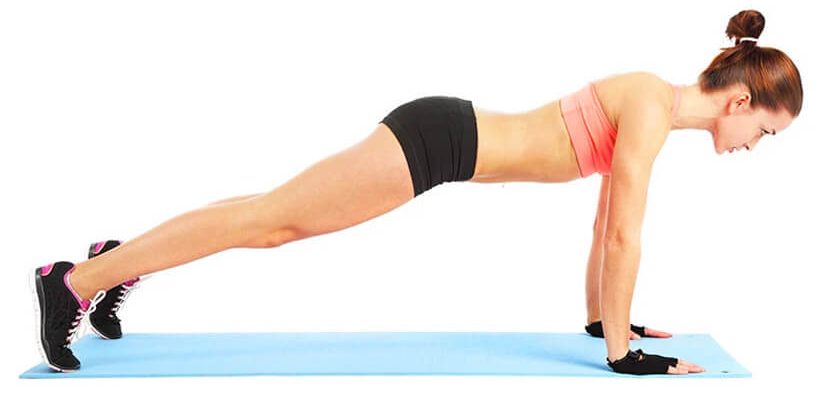
| Duration | 1 minute or 10 reps |
| Frequency | Every other day or three times a week. |
| How to do it |
|
| Tips |
|
5. Neck pull
If you tried the Pilates roll-up, the neck pull is related to that exercise. What this move does is that it strengthens your abs and the muscles at the back of your body such as your neck extensors, spinal extensors, and hamstrings.
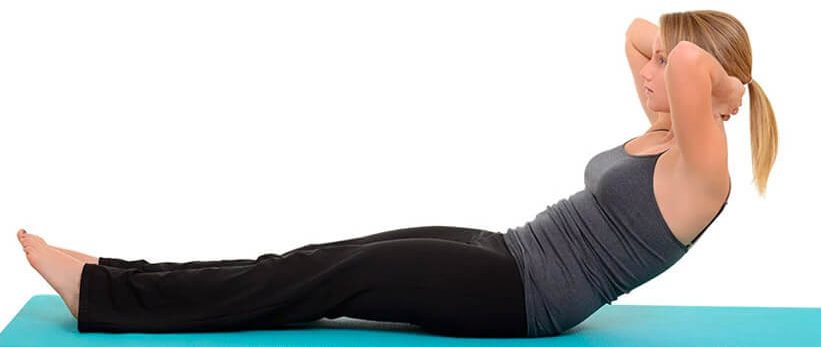
| Duration | 3 minutes or 3 sets with 5 repetitions per set |
| Frequency | Every other day or three times a week. |
| How to do it |
|
| Tips |
|
Advanced pilates
1. Scissors
For this exercise, your legs will be doing most of the work. You’re going to be in an upside down position. Yes, it’s a challenging exercise but it does wonders to your upper and lower abs.
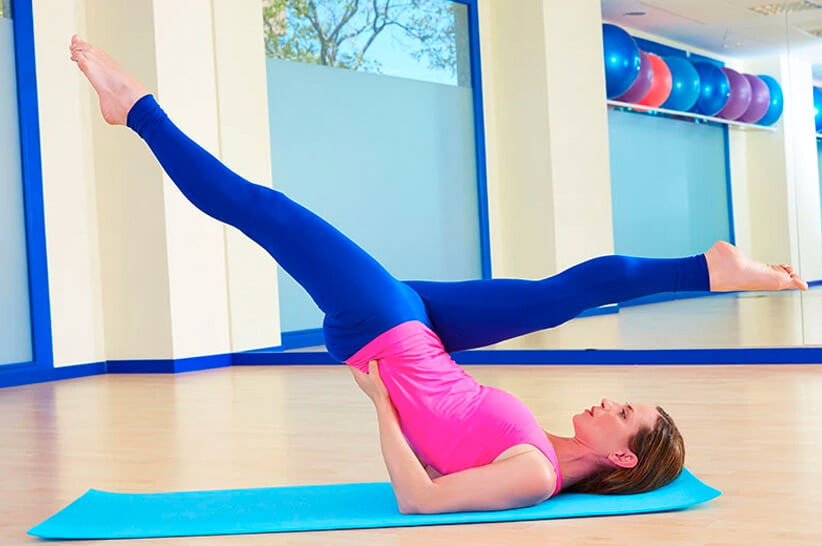
| Duration | 3 minutes |
| Frequency | Every other day or three times a week. |
| How to do it |
|
| Tips |
|
2. Side plank with leg raise
Firm obliques make you look good and improve your posture. This exercise achieves that. To maximize it, use proper form.
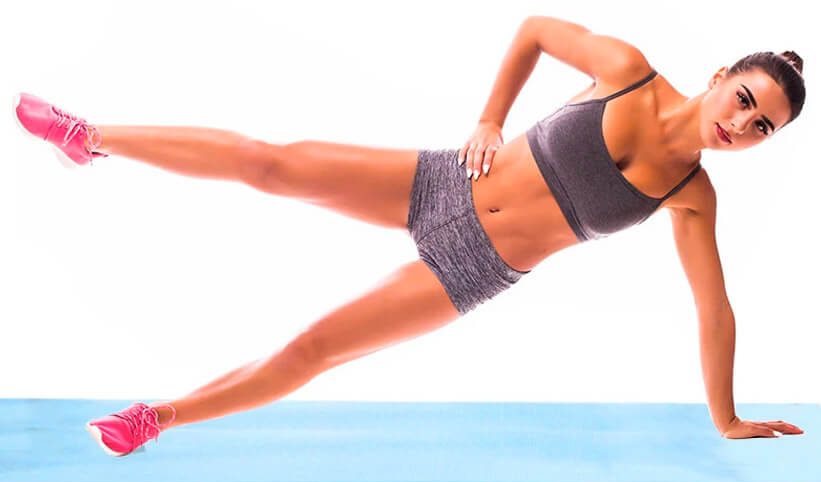
| Duration | 1-3 minutes |
| Frequency | Every other day or three times a week. |
| How to do it |
|
| Tips |
|
3. Pilates back bow
Reduce back pain, especially lower back pain, with this exercise. It effectively loosens up tight muscles while doubling as an ab workout.
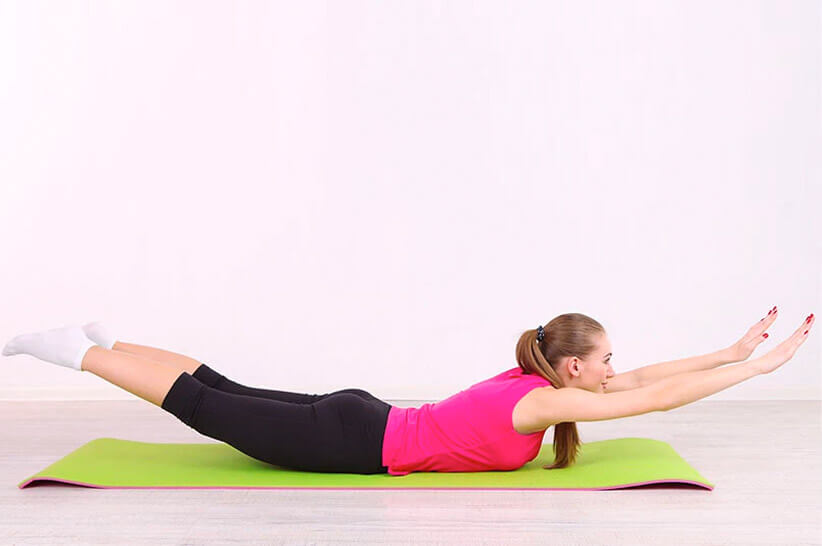
| Duration | 3 minutes |
| Frequency | Every other day or three times a week. |
| How to do it |
|
| Tips |
|
4. Rocking pilates
Stabilize your lower back with the rocking pilates exercise. Most people who do this exercise say that they feel great afterwards. Why don’t you try it yourself?

| Duration | 1 minute |
| Frequency | Every other day or three times a week. |
| How to do it |
|
| Tips |
|
5. Corkscrew
The corkscrew exercise builds strength in your neck and shoulders. It targets your abdominal muscles especially your obliques, as you circle your legs from side to side.

| Duration | 1-3 minutes |
| Frequency | Every other day or three times a week. |
| How to do it |
|
| Tips |
|
Conclusion
Exercising on top of following a healthy diet such as keto leads to the best results. If you need a good core workout that comes with other benefits like flexibility, relief from back pain, and higher energy levels, choose Pilates.
Takeaways
- While Pilates focuses on core strengthening, it also targets the muscles of your back, arms, and legs.
- The exercise was created by Joseph Pilates, an orderly who saw the need for non-ambulatory patients to get movement.
- Benefits of Pilates include relief from lower back pain, good posture, higher energy levels, weight loss (with the help of a healthy lifestyle), and better sleep.
- You can find many Pilates workouts for all levels — beginner, intermediate, and advanced.
- When doing Pilates, always focus on proper form.



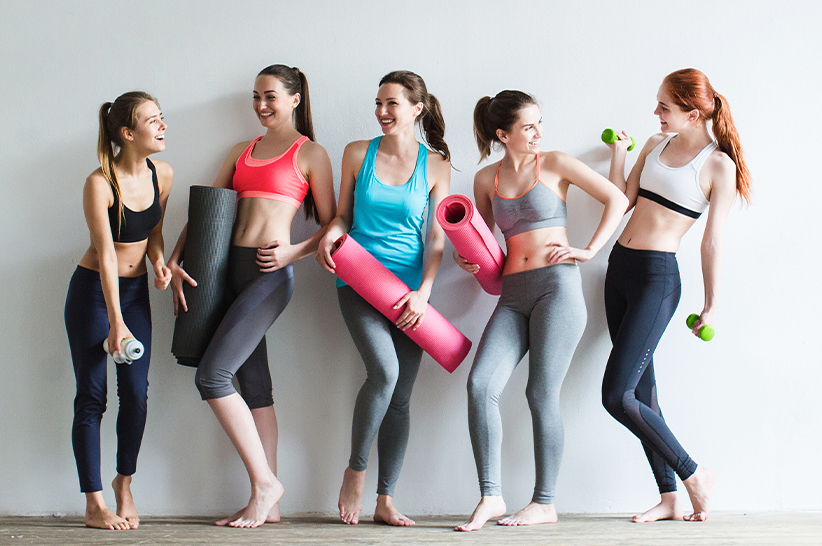
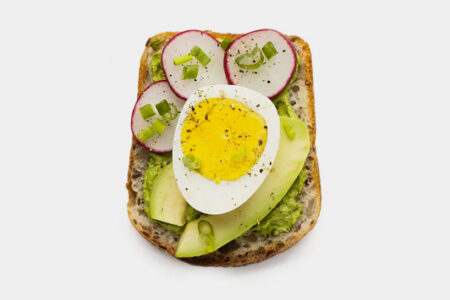
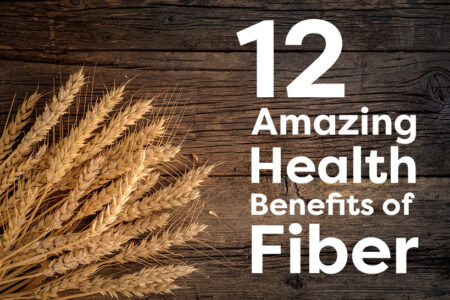


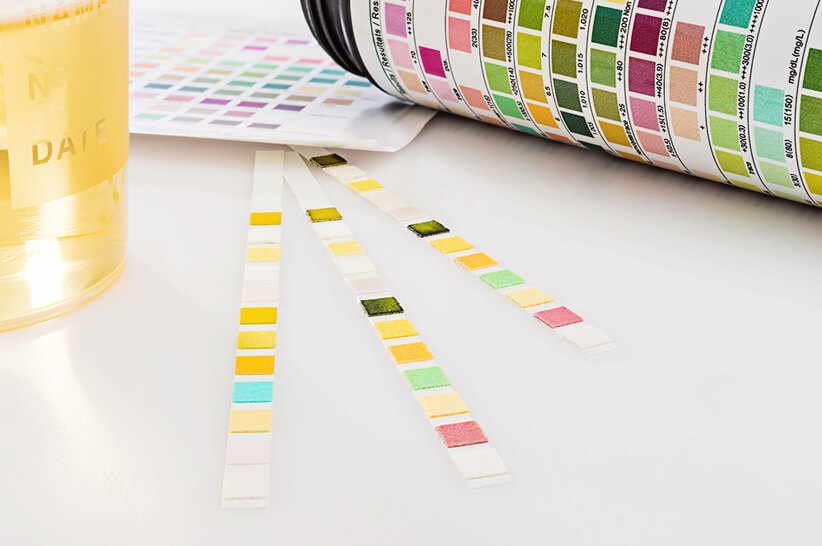

![Juicing for Weight Loss: Everything You Need to Know [Plus Recipes]](/wp-content/uploads/2019/08/Juicing-for-Weight-featured-image.jpg)






